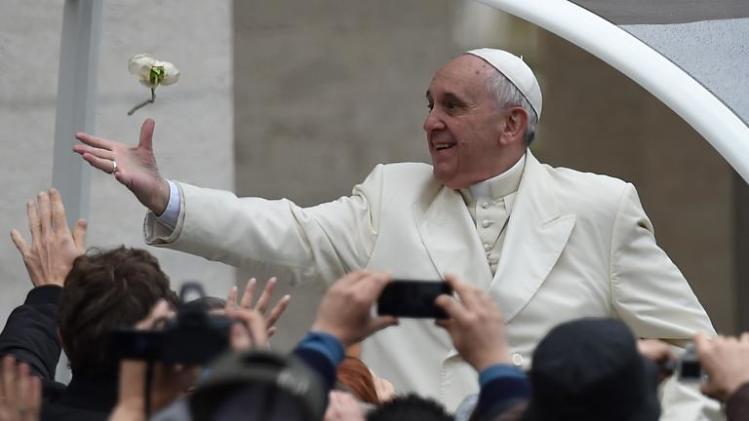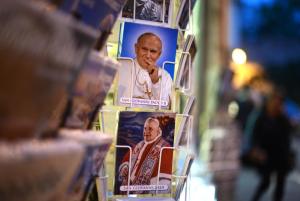Francis looks to heal Church with two pope saints
Vatican City (AFP) - Pope Francis aims to unite conservative and reformist strands of Catholicism with the first canonisation of two popes this month -- an impressive masterstroke that has already stirred dissent in some quarters.
Conferring sainthood on John XXIII and John Paul II means bringing together two distinct schools of thought on what a pope should be -- a humble parish priest figure or a globetrotting, charismatic superstar.
John Allen, a Vatican affairs expert at the Boston Globe in the United States, has written that the joint canonisation shows Francis's "inclusive spirit".
"Francis is speaking not just to the outside world but to rival camps within the Catholic fold who see John XXIII and John Paul II as their heroes -- meaning liberals and conservatives, respectively," he said.
Just a few months into his reign, Francis broke with tradition last year by dramatically propelling the canonisation case for John XXIII -- known as "Good Pope John" and a pontiff with whom he shares similarities.
Less widely known than Poland's Karol Wojtyla, Italy's Angelo Roncalli played a key role in modernising Catholicism in the 1960s and to this day inspires progressives who want a more down-to-earth Church.
- 'Sainthood now!' -
The two popes will be canonised together in St Peter's Basilica on April 27, with many pilgrims -- anything from hundreds of thousands to a few million -- expected.
Rome city authorities are deploying thousands of police officers and setting up four giant screens in the city centre so pilgrims can follow the canonisation mass.
Pope emeritus Benedict XVI, who last year became the first pontiff to resign since the Middle Ages, could also attend, meaning two living and two deceased popes would be present at the historic ceremony.
Enthusiasts can follow the action on the dedicated website www.2papisanti.org which has even been coming out with daily vignettes depicting the two popes preparing for sainthood as comic-book characters.
While sainthood appeared a foregone conclusion for John Paul II from the moment a vast crowd of mourners chanted "Santo Subito!" (Sainthood Now!) at his funeral in 2005, the result for John XXIII was less obvious.
With his canonisation announcement in July 2013, Francis confirmed two miracles attributed to John Paul II in the traditional procedure for sainthood, but crucially skipped a step for John XXIII.
Francis declared the Italian pope, who only had one supposed miraculous healing to his name, so widely venerated already that he did not need a second miracle -- a rare loophole under Catholic Church rules.
"It highlights the fact that the devotion was not very widespread", said Marco Tosatti, a Vatican expert for the La Stampa daily, suggesting that fewer people praying to John XXIII meant less chance of miracles.
"He wanted to make someone he really likes a saint."
The move has irritated Wojtyla's Polish fans who say it overshadows their hero -- a divisive figure who critics say turned a blind eye to paedophile priests and waged a campaign against leftist clergymen.
Vatican conservatives have also expressed concern about bending the rules on sainthood, seeing this as the latest example of maverick behaviour from a pope who has shown impatience with tradition.
- Political flair -
Bergoglio has frequently expressed admiration for John XXIII, a former Vatican diplomat known as the driving force behind the reformist Vatican II Council.
He has also eulogized -- although less often -- John Paul II as a "missionary" and a "tireless preacher".
Vatican experts say that the double canonisation shows "political flair" by Pope Francis but it remains to be seen whether his efforts to unite Catholicism pay off.
Experts also point to some similarities between John XXIII and John Paul II, who both showed a tradition-breaking style tempered with conservatism on doctrine -- similar to Pope Francis.
But expert Bruno Bartoloni said John Paul II's fame overshadows that of John XXIII so much that the latter could end up being "a bit of a detail" at the ceremony.
"There was a veneration in Italy, he was extremely popular. Taxi drivers used to have his image on their dashboards! But now that generation is gone," he said.









ไม่มีความคิดเห็น:
แสดงความคิดเห็น